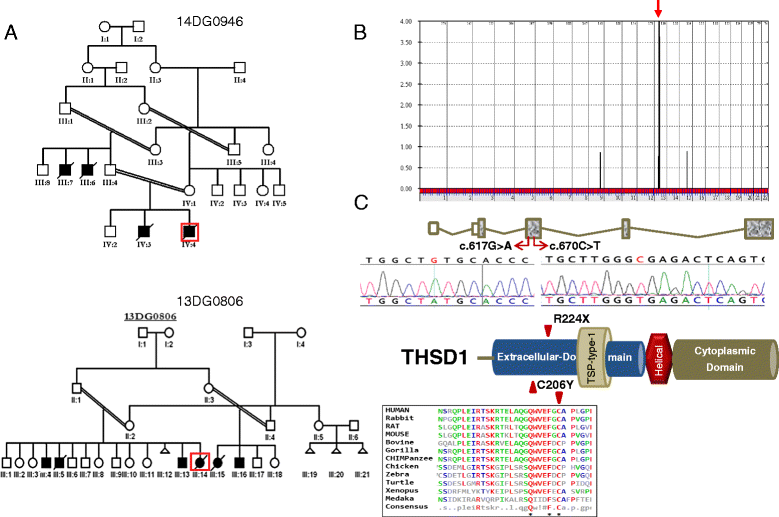Identification of embryonic lethal genes in humans by autozygosity mapping and exome sequencing in consanguineous families
- PMID: 26036949
- PMCID: PMC4491988
- DOI: 10.1186/s13059-015-0681-6
Identification of embryonic lethal genes in humans by autozygosity mapping and exome sequencing in consanguineous families
Abstract
Background: Identifying genetic variants that lead to discernible phenotypes is the core of Mendelian genetics. An approach that considers embryonic lethality as a bona fide Mendelian phenotype has the potential to reveal novel genetic causes, which will further our understanding of early human development at a molecular level. Consanguineous families in which embryonic lethality segregates as a recessive Mendelian phenotype offer a unique opportunity for high throughput novel gene discovery as has been established for other recessive postnatal phenotypes.
Results: We have studied 24 eligible families using autozygosity mapping and whole-exome sequencing. In addition to revealing mutations in genes previously linked to embryonic lethality in severe cases, our approach revealed seven novel candidate genes (THSD1, PIGC, UBN1, MYOM1, DNAH14, GALNT14, and FZD6). A founder mutation in one of these genes, THSD1, which has been linked to vascular permeability, accounted for embryonic lethality in three of the study families. Unlike the other six candidate genes, we were able to identify a second mutation in THSD1 in a family with a less severe phenotype consisting of hydrops fetalis and persistent postnatal edema, which provides further support for the proposed link between this gene and embryonic lethality.
Conclusions: Our study represents an important step towards the systematic analysis of "embryonic lethal genes" in humans.
Figures


References
-
- Ayadi A, Birling M-C, Bottomley J, Bussell J, Fuchs H, Fray M, et al. Mouse large-scale phenotyping initiatives: Overview of the European Mouse Disease Clinic (EUMODIC) and of the Wellcome Trust Sanger Institute Mouse Genetics Project. Mamm Genome. 2012;23:600–10. doi: 10.1007/s00335-012-9418-y. - DOI - PMC - PubMed
MeSH terms
Associated data
- Actions
LinkOut - more resources
Full Text Sources
Other Literature Sources
Molecular Biology Databases

